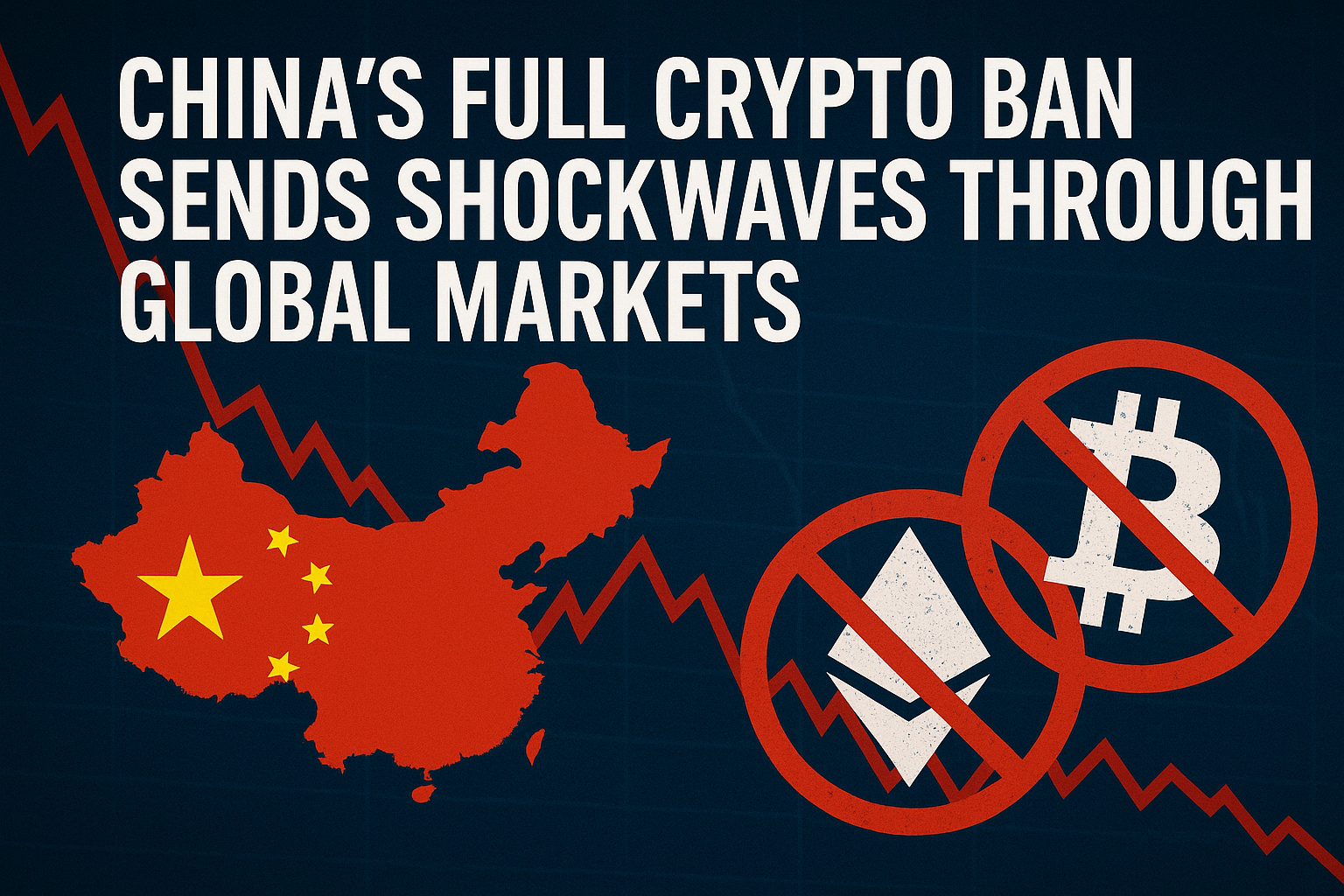
China’s Bold Crypto Crackdown
On May 31, 2025, China made headlines once again by executing a full-scale ban on all cryptocurrency-related activities. This sweeping move outlaws the trading, mining, and even personal ownership of major digital currencies such as Bitcoin (BTC) and Ethereum (ETH). While China has taken a firm stance against decentralized digital assets in the past, this latest measure marks a dramatic escalation and sends a clear message: Beijing is prioritizing centralized financial control over open crypto ecosystems.
The ban aligns with China’s broader ambitions to tighten economic oversight and accelerate the adoption of its own Central Bank Digital Currency (CBDC)—the digital yuan. By eliminating the influence of foreign and decentralized digital currencies, the Chinese government is effectively creating a financial environment where it can exert complete authority, both domestically and abroad.
The announcement immediately caused panic across global crypto markets, with sharp declines in the prices of BTC, ETH, and other altcoins. Exchanges saw unprecedented sell-offs, and investor sentiment shifted from cautious optimism to outright fear. Within hours, billions were wiped from the crypto market’s capitalization, highlighting the central role China continues to play in this evolving financial landscape.
Why Did China Ban Crypto?
There are several key motivations behind this landmark decision, each rooted in China’s long-term strategic goals.
- Energy Consumption Concerns:
China has been working aggressively toward achieving its environmental targets, particularly in reducing carbon emissions. Bitcoin mining, notorious for its massive energy demands, stood in stark opposition to these goals. Despite earlier efforts to relocate mining operations, the government’s new ban puts an end to all domestic mining activity, citing sustainability as a primary concern. - Strengthening Financial Oversight:
Decentralized cryptocurrencies operate outside of traditional financial systems, creating a lack of government oversight and increasing the potential for financial instability. Chinese authorities have voiced growing concern over the risk of speculative trading and unregulated capital flows. By banning cryptocurrencies outright, the government aims to rein in potential threats to its financial sovereignty. - Combatting Illicit Activities:
Cryptocurrencies have long been associated—rightly or wrongly—with money laundering, tax evasion, and illegal trade. Chinese officials argue that the anonymous nature of many crypto transactions makes them ideal tools for black-market activity. The ban is framed as a move to uphold financial transparency and security. - Promoting the Digital Yuan:
At the heart of this policy lies China’s ambition to lead the global digital currency race. By phasing out competing assets like Bitcoin and Ethereum, the government is clearing the path for widespread adoption of the digital yuan. Unlike decentralized crypto, the CBDC is fully state-controlled, offering China unparalleled monetary visibility and influence both at home and internationally.
Global Impact and Market Reaction
The global response to China’s decision was swift and intense. Within minutes of the announcement, crypto prices plummeted. Bitcoin fell over 15% in the first 24 hours, while Ethereum saw similar declines. Asian markets were hit hardest, given their proximity and exposure to Chinese policies, but the ripple effects were felt worldwide.
Investor Panic:
Many investors, especially retail traders in Asia, reacted by liquidating their holdings in fear of further price drops or additional regulatory clampdowns in their own countries. Exchanges reported record-high sell orders, and trading volumes surged.
Mining Operations Halted:
China’s share of global Bitcoin mining power has dropped drastically. Previously, even after partial restrictions, Chinese miners contributed a significant portion to the global hash rate. With the new ban, many operations have shut down entirely or begun the expensive and logistically complex process of relocating to more crypto-friendly jurisdictions such as Kazakhstan, the U.S., or parts of South America.
Regulatory Ripple Effect:
There is growing speculation that China’s actions may influence other governments to reevaluate their crypto policies. Countries with authoritarian tendencies or concerns about capital flight might see China’s stance as a model to follow, while democratic nations could use this moment to clarify their regulatory frameworks to offer contrast and competitive advantage.
Volatility on the Horizon:
Experts anticipate an extended period of volatility in the crypto markets. Uncertainty about global regulation, miner migration, and retail investor confidence will likely create unstable price swings in the weeks to come.
What Experts Are Saying Now
The crypto community is divided in its interpretation of China’s move.
A Market Correction in Disguise?
Some financial analysts argue that this ban is catalyzing a long-overdue correction in an overheated market. They see the sudden drop as a healthy, if painful, rebalancing that may ultimately stabilize prices over time.
Concerns Over Slowed Adoption:
On the other hand, industry leaders and developers are concerned that the ban could slow cryptocurrency adoption, particularly in Asia where China’s tech infrastructure and population wield significant influence. With one of the largest markets now closed off, many projects may lose user bases, investments, or development partnerships.
Fuel for Decentralization Advocates:
Interestingly, the ban has also become a rallying point for decentralization purists. Many argue that China’s crackdown only validates the core purpose of decentralized finance—to exist outside the control of centralized powers. According to them, such bans prove the necessity of trustless systems that resist censorship.
As 2025 unfolds, China’s crypto ban will likely be remembered as a defining moment in the digital asset space. It marks not just a geopolitical shift, but a test of the decentralized financial system’s resilience and adaptability. While short-term disruption is inevitable, how the crypto world responds could shape its future for years to come.